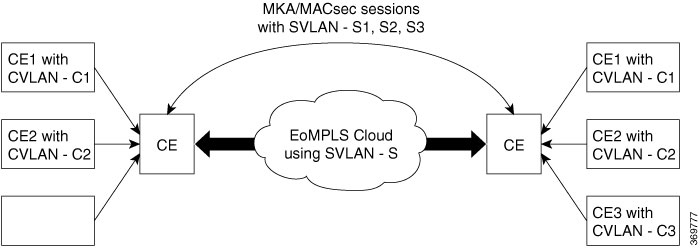Feature Information for MACsec as a Service
The following table provides release information about the feature or features described in this module. This table lists only the software release that introduced support for a given feature in a given software release train. Unless noted otherwise, subsequent releases of that software release train also support that feature.
Use Cisco Feature Navigator to find information about platform support and Cisco software image support. To access Cisco Feature Navigator, go to www.cisco.com/go/cfn. An account on Cisco.com is not required.|
Feature Name |
Releases |
Feature Information |
|---|---|---|
|
MACsec as a Service - Ethernet Virtual Circuit Support for MACsec and MKA |
Cisco IOS XE Gibraltar 16.12.1a |
This document describes how to deploy an encryption solution using Ethernet Virtual Circuit (EVC) support for MACsec with MACsec Key Agreement (MKA) protocol. MACsec with MKA detects EVCs and enables the physical interface that matches the EVC criteria. With this functionality, users can transport layer 2 traffic from multiple enterprises over a WAN link and independently secure their traffic with MACsec over EVC. In this release, the feature is supported only on Cisco ASR1000 Series Aggregation Services Routers. The following commands were introduced or modified: mka pre-shared-key key-chain key-chain-name , mka policy policy-name , mka default-policy , macsec replay-protection window window size , eapol destination-address destination-address{bridge-group-address | broadcast-address | lldp-multicast-address | unicast mac-address} , eapol eth-type eth-type . |




 Feedback
Feedback